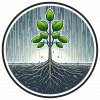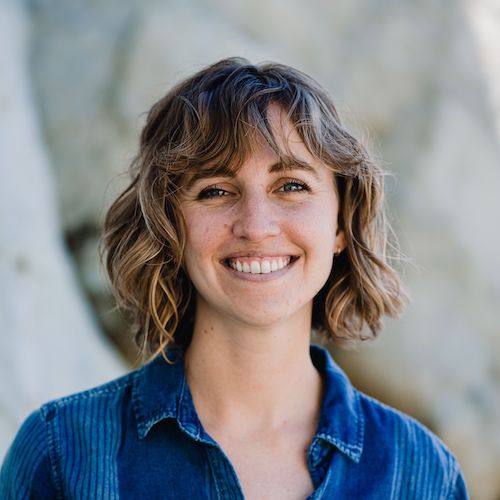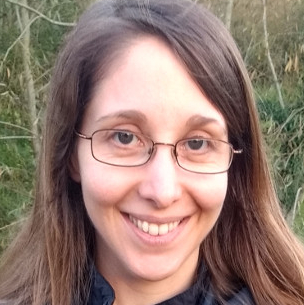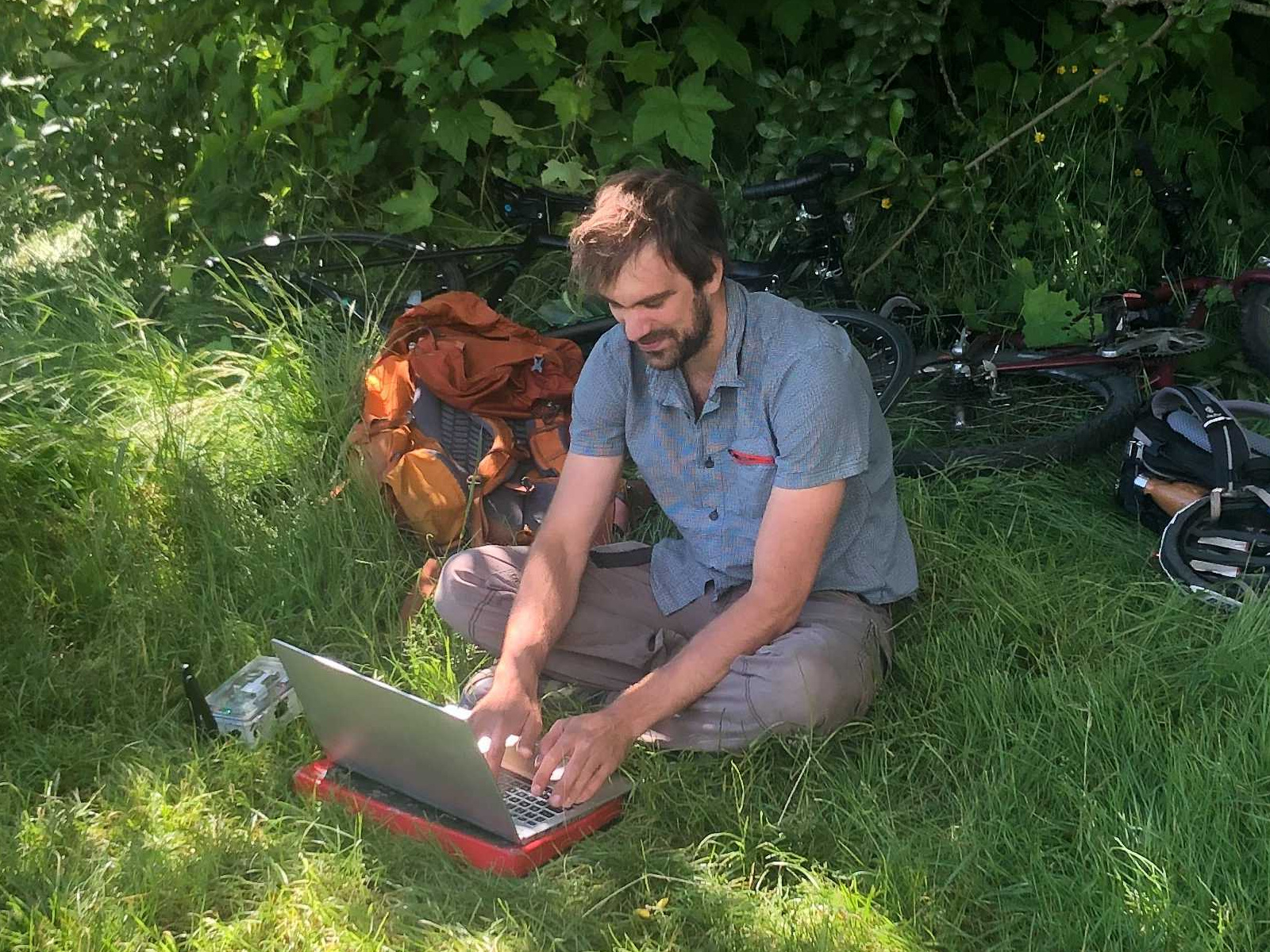With new technologies revolutionizing data collection, wildlife researchers are becoming increasingly able to collect data at much higher volumes than ever before. Now we are facing the challenges of putting this information to use, bringing the science of big data into the conservation arena. With the help of machine learning tools, this area holds immense potential for conservation practices. The applications range from online trafficking alerts to species-specific early warning systems to efficient movement and biodiversity monitoring and beyond.
However, the process of building effective machine learning tools depends upon large amounts of standardized training data, and conservationists currently lack an established system for standardization. How to best develop such a system and incentivize data sharing are questions at the forefront of this work. There are currently multiple AI-based conservation initiatives, including Wildlife Insights and WildBook, that are pioneering applications on this front.
This group is the perfect place to ask all your AI-related questions, no matter your skill level or previous familiarity! You'll find resources, meet other members with similar questions and experts who can answer them, and engage in exciting collaborative opportunities together.
Just getting started with AI in conservation? Check out our introduction tutorial, How Do I Train My First Machine Learning Model? with Daniel Situnayake, and our Virtual Meetup on Big Data. If you're coming from the more technical side of AI/ML, Sara Beery runs an AI for Conservation slack channel that might be of interest. Message her for an invite.
Header Image: Dr Claire Burke / @CBurkeSci

Explore the Basics: AI
Understanding the possibilities for incorporating new technology into your work can feel overwhelming. With so many tools available, so many resources to keep up with, and so many innovative projects happening around the world and in our community, it's easy to lose sight of how and why these new technologies matter, and how they can be practically applied to your projects.
Machine learning has huge potential in conservation tech, and its applications are growing every day! But the tradeoff of that potential is a big learning curve - or so it seems to those starting out with this powerful tool!
To help you explore the potential of AI (and prepare for some of our upcoming AI-themed events!), we've compiled simple, key resources, conversations, and videos to highlight the possibilities:
Three Resources for Beginners:
- Everything I know about Machine Learning and Camera Traps, Dan Morris | Resource library, camera traps, machine learning
- Using Computer Vision to Protect Endangered Species, Kasim Rafiq | Machine learning, data analysis, big cats
- Resource: WildID | WildID
Three Forum Threads for Beginners:
- I made an open-source tool to help you sort camera trap images | Petar Gyurov, Camera Traps
- Batch / Automated Cloud Processing | Chris Nicolas, Acoustic Monitoring
- Looking for help with camera trapping for Jaguars: Software for species ID and database building | Carmina Gutierrez, AI for Conservation
Three Tutorials for Beginners:
- How do I get started using machine learning for my camera traps? | Sara Beery, Tech Tutors
- How do I train my first machine learning model? | Daniel Situnayake, Tech Tutors
- Big Data in Conservation | Dave Thau, Dan Morris, Sarah Davidson, Virtual Meetups
Want to know more about AI, or have your specific machine learning questions answered by experts in the WILDLABS community? Make sure you join the conversation in our AI for Conservation group!
AI and Electronic Engineer interested in insect counting and plant-pollinator interactions. UK based!
- 0 Resources
- 2 Discussions
- 3 Groups
Universidade Federal do Rio Grande do Norte (UFRN)
I'm a Biologist and currently a master's student. My research focuses on understanding how birds respond to a restoration experiment in a Seasonally Dry Tropical Forest exclusive to Brazil through bioacoustics.
- 0 Resources
- 0 Discussions
- 4 Groups
- @APooran
- | She/her
- 0 Resources
- 0 Discussions
- 9 Groups
- @kristian.cuervo
- | He/Him
Applied Mathematics student in Denmark, interested in applications of mathematics to ecology and nature conservation. Currently interested in developing sensors for perimeter detection in wildlife conservations in Africa.
- 0 Resources
- 4 Discussions
- 9 Groups
- @MorganeLabadie
- | She/Her
I'm an ecology researcher with extensive experience of fieldwork and project management in international contexts. I specialise in wildlife, zoonotic diseases, data collection and analysis using mainly non-invasive techniques (acoustic, camera traps, etc.) and invasive techniques
- 0 Resources
- 0 Discussions
- 4 Groups
- @Jen_NZ
- | she/her
- 0 Resources
- 2 Discussions
- 7 Groups
- @cappel
- | she/her
Wildlife Science PhD candidate working on computer vision with camera traps and bioacoustics
- 0 Resources
- 4 Discussions
- 13 Groups
- @valengsb
- | she / her
GIS specialist for Audubon Americas | Biologist with an emphasis on Conservation and Sustainable Development | Innovative approaches in the study and monitoring of biodiversity for possible, biodiverse, and just futures.
- 0 Resources
- 0 Discussions
- 18 Groups
Ecologist at Noe NGO, Project manager in restauration, rewilding, and citizen sciences program for grassland ecosystems and wild pollinators

- 0 Resources
- 1 Discussions
- 7 Groups
- @capreolus
- | he/him
Capreolus e.U.
wildlife biologist with capreolus.at





- 1 Resources
- 78 Discussions
- 16 Groups
- @JakobWiren
- | He,him
Swedish soon-to-be graduate engineer in AI/ML and robotics. Writing my master thesis in using decision trees for anti-poaching in Limpopo, South Africa. Am passionate about conservation, AI and travelling. Help me find a way to help you!
- 0 Resources
- 1 Discussions
- 13 Groups
- @fshort
- | He / Him
Boston University PhD Candidate, Biological Anthropology. Engaging in passive acoustic monitoring (PAM) of Bornean orangutans (Pongo pygmaeus wurmbii), Bornean white-bearded gibbons (Hylobates albibarbis), and red leaf monkeys (Presbytis rubicunda)
- 0 Resources
- 2 Discussions
- 2 Groups
Absolutely fascinating uses of AI for equitable conservation! Hope it inspires you!
21 March 2025
Naturalis is looking for a postdoc in AI for Ultrasonic Bioacoustic Monitoring!
21 March 2025
This thesis concludes that artificial intelligence offers valuable opportunities for mitigating the impacts of climate change on wildlife with careful consideration of its limitations and ethical implications.
10 March 2025
WWF's Arctic Community Wildlife Grants program supports conservation, stewardship, and research initiatives that focus on coastal Arctic ecology, community sustainability, and priority Arctic wildlife, including polar...
7 March 2025
Join the FathomNet Kaggle Competition to show us how you would develop a model that can accurately classify varying taxonomic ranks!
4 March 2025
Up to 48 months contract - 14+22 (+12) | Belvaux
25 February 2025
Up to 6 months internship position to work on DiMON project which aims to develop a non-lethal, compact device that, when coupled with traditional entomological traps, captures high-resolution, multi-view insect images...
25 February 2025
Link
Using advanced AI technology, GhostNetZero.ai analyzes the collected sonar data to identify specific locations where ghost nets are likely to be found. This enables the recovery of these abandoned nets and helps to rid...
13 February 2025
workshop introduced participants to the power of bioinformatics and next-generation sequencing (NGS) in conservation biology.
10 February 2025
Teaching Children about Empathy for the Endangered Species and for Nature Conservation In celebration of the Earth Conservation Day, @veracityhouse in collaboration with the Nature Conservation Foundation trained...
10 February 2025
Lake Nakuru National Park is one of the first rhino sanctuaries in Kenya where Artificial-Intelligence enabled Forward Looking Infrared (FLIR) camera systems were installed to help curb the escalating poaching of black...
8 February 2025
June 2025
event
July 2025
October 2025
event
event
August 2024
event
July 2024
June 2024
May 2024
April 2024
event
73 Products
Recently updated products
16 Products
Recently updated products
| Description | Activity | Replies | Groups | Updated |
|---|---|---|---|---|
| 📸 Do you use camera traps in your work? Take part in our survey!Hi everyone! I’m currently a final-year engineering... |
|
Camera Traps, AI for Conservation, Data management and processing tools, Open Source Solutions, Software Development | 3 weeks 4 days ago | |
| WILDLABS colleagues—My team at TNC is looking for support as we try to understand opportunities of AI applications for freshwater (eco)... |
|
AI for Conservation | 4 weeks 1 day ago | |
| Hi Adam! Sounds like you have your work cut out for you. I have not used radar systems or AI systems for this sort of detection, but there are methods using change detection... |
|
AI for Conservation, Drones, Wildlife Crime | 1 month ago | |
| Hey Amber, that makes a lot of sense! And this effort by Insect Detect is amazing, thanks for sharing! |
|
AI for Conservation, Autonomous Camera Traps for Insects | 1 month ago | |
| Ritika, All the best! I hope someone provides a more substantive answer! I have also graduated with masters in AI and ML recently. Difference being I am at the end of my... |
|
AI for Conservation, Software Development | 1 month ago | |
| One of our goals with explorer.land is to bridge satellite data and on-the-ground perspectives — helping teams combine field updates,... |
|
AI for Conservation, Geospatial, Open Source Solutions, Sensors | 1 month ago | |
| True, the US ecosystem is a challenging space right now, for basically all sectors. We should not let the US chaos prevent us from engaging with opportunities in other... |
|
AI for Conservation, Camera Traps, Connectivity, Drones, Emerging Tech, Ethics of Conservation Tech, Marine Conservation, Sensors | 1 month 1 week ago | |
| Hi, just wanted to let whoever is interested that v.1.3 of DeepFaune is out! Deepfaune is a software that runs on any standard... |
|
Camera Traps, AI for Conservation, Open Source Solutions | 1 month 1 week ago | |
| New stable release : v1.5.1We are pleased to announce the latest release with several important enhancement, fixes and documentation improvements to ensure compatibility with the... |
+15
|
Acoustics, AI for Conservation, Open Source Solutions, Software Development | 1 month 1 week ago | |
| Hi all, I'm Vainqueur BULAMBO. I'm looking for a fully funded PhD opportunity in ecological data science or conservation... |
|
Acoustics, AI for Conservation, Autonomous Camera Traps for Insects | 1 month 2 weeks ago | |
| A nice work from @dmorris! See his LK post. "Lots of information in the conservation literature is represented in maps (e.g., the... |
|
AI for Conservation, Geospatial | 1 month 2 weeks ago | |
| Hi all, I'm the founder of a company in Texas that provides thermal drone surveying for private game ranches. Right now, we're doing everything completely manually in terms of... |
+20
|
AI for Conservation | 1 month 2 weeks ago |
Connection needed!
15 November 2022 4:23pm
24 November 2022 3:55pm
Thank you so much!
2 December 2022 3:14pm
Hahaha, now I see why you were asking ...
PhD Positions at University of Michigan CSE
23 November 2022 3:02pm
MozFest 2023 call for proposals on Tech & Biodiversity
22 November 2022 11:10am
Dear AI, We Have Trust Issues
14 November 2022 11:09pm
Hierarchical Deep Learning to Improve Automatic Classification of Pests and Biodiversity Monitoring in Agroecosystems
8 November 2022 3:46pm
Spatial Data Analysis, TNC
8 November 2022 11:34am
Senior AI Research Scientist, Earth Species Project
8 November 2022 11:27am
New paper: Integrating machine learning, remote sensing and citizen science to create an early warning system for biodiversity
7 November 2022 7:10pm
ConservationAI
20 October 2022 2:41pm
20 October 2022 7:32pm
Out of curiosity, what are the similarities/differences between your platform and other image classification ones such as Wildlife Insights, WildID, ZambaCloud? I don't mean that in like a "what's best" way, just would be great to better understand the the details so that people can assess what to try for their specific use cases & applications!
It would be great to have a comparative specs sheet of sorts! Peter Gyurov started something like that: https://www.notion.so/Camera-Trap-Pipeline-Solution-Comparison-2eac80825c4941b0b2b5fad3daea1cc3. Would be great to add ConservationAI to this list!
Conservation Technology Intern (Vietnam)
 Stephanie O'Donnell
and 1 more
Stephanie O'Donnell
and 1 more
19 October 2022 9:22am
Introducing G.AI.A: Artificial Intelligence and Planetary-Scale Environmental Management
13 October 2022 1:48am
Try AI Micro-Internship 2023
11 October 2022 5:42pm
Upcoming WWF Webinar Series: Artificial Intelligence and Conservation
11 October 2022 12:30pm
Artificial Intelligence and Conservation: Ethics
11 October 2022 12:28pm
Artificial Intelligence and Conservation: Prediction
11 October 2022 12:27pm
Artificial Intelligence and Conservation: Where We Are Now
11 October 2022 12:23pm
The Smart Biosphere: How Technology can provide regenerative resources at scale
10 October 2022 12:06pm
Frontiers Symposium: Digital tools for reversing environmental degradation
5 October 2022 10:23am
Multi-day workshop: Machine Learning Advances for Marine Acoustics & Imagery Data
4 October 2022 5:20pm
Audio Across Domains Workshop 2022
3 October 2022 7:54pm
3 October 2022 11:40pm
11 October 2022 2:05pm
18 Sustainability Job Opportunities at Google
3 October 2022 7:09pm
New paper - Rookognise: Acoustic detection & identification of individual rooks in field recordings using multi-task neural networks
3 October 2022 2:35pm
New paper - FathomNet: A global image database for enabling artificial intelligence in the ocean
27 September 2022 9:44pm
Conservation Tech Directory - new update!
29 August 2022 2:38pm
23 September 2022 5:26pm
Congrats on the milestone Carly and Gracie!
26 September 2022 10:07pm
Thanks so much!!
Mangrove soundscape
27 August 2022 4:57pm
29 August 2022 2:47pm
You might check out the devices listed in the Conservation Tech Directory - you can search for 'acoustic recorder' or 'ARU' or something like that.
The most common off-the-shelf models (other than Frontier Labs' BARLTs mentioned above😊) are Open Acoustic Devices Audiomoths & Hydromoths (which may be particularly useful for you since they come in completely watertight cases that can be stuck underwater for deployments), Wildlife Acoustics' SongMeter series, and Cornell Lab of Ornithology's Swift units.
30 August 2022 10:10pm
Camilo--
Are you interested only in airborne sounds or do you want to deploy hydrophones? That decision would inform a lot of other decisions about your purchase of equipment, as would having a clearer picture of your budget.
23 September 2022 5:39pm
Hi there Camilo,
What an interesting project! If you are looking for a lower cost, but effective tools for acoustic monitoring you might want to look into two options:
SoundTraps - are very commonly used and perform quite well:
SonarPoints - these are also a great instrument option:
page/sonarpoint | Desert Star Systems
The SonarPoint system is the third generation of Desert Stars passive underwater acoustics monitoring toolkits.
Senior Conservation Technology Expert Position (Consultancy) with the Global Wildlife Program
22 September 2022 5:35pm
Catch Up with the Variety Hour: October 2022
22 September 2022 1:59pm
WIA After Hours: Episode #5 - AI for Wildlife Conservation and Imageomics with Dr. Tanya Berger-Wolf
21 September 2022 6:53pm
Amazon Sustainability call for proposals — Fall 2022
20 September 2022 11:37am






















































22 November 2022 2:46pm
Maybe she is not based in Asia, but you could check Lily Xu, who gave a presentation at the IUCN World Congress a year ago on using AI against poaching in Cambodia. The project is called Protection Assistant for Wildlife Security (PAWS).
For a summary of this project and another ( presented by a man ) see
Machine Learning against poaching and illegal logging – Rubber Boots Data
At the IUCN's World Conservation Congress I ran into two applications of machine learning (ML) to guard protected areas against direct detrimental human activity. Both stories are success stories but also both applications are in their early phases. In this post, I will compare the two and ask a couple of common sense questions that…